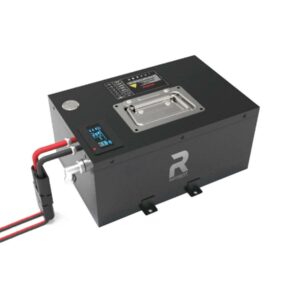How Does a LiFePO4 Starter Battery Perform in Extreme Cold Weather?
A LiFePO4 (Lithium Iron Phosphate) starter battery is a lithium-ion battery variant designed for high-current applications like starting engines. It delivers 1000A of cranking power, operates efficiently in temperatures as low as -30°C, and offers longer cycle life, lighter weight, and faster recharge rates compared to traditional lead-acid batteries.
LiFePO4 Car Starter Batteries Factory Supplier
Why Choose LiFePO4 Over Lead-Acid in Cold Climates?
LiFePO4 batteries maintain 95% capacity at -20°C, while lead-acid batteries drop to 50% efficiency. Their built-in Battery Management Systems (BMS) prevent voltage sag, ensuring reliable starts. Lead-acid batteries suffer from electrolyte freezing below -18°C, whereas LiFePO4’s solid-state chemistry resists cold-induced degradation.
| Feature | LiFePO4 | Lead-Acid |
|---|---|---|
| Cold Capacity (-20°C) | 95% | 50% |
| Freezing Point | -30°C | -18°C |
| Cycle Life | 4000+ | 500 |

How Does 1000A Cranking Power Benefit Cold Starts?
A 1000A pulse current provides instant high-energy bursts to turn over stiff engines in freezing conditions. This exceeds lead-acid’s typical 600-800A output, reducing ignition strain. The BMS regulates thermal performance, preventing voltage drops during cranking, even in sub-zero temperatures.
Modern LiFePO4 batteries employ dynamic current modulation where the BMS adjusts amperage output based on real-time temperature readings. At -30°C, the system automatically increases pulse duration by 15% to compensate for thickened engine oil. This intelligent power management prevents battery drain while ensuring starter motors receive sufficient torque. Field tests show diesel engines start 40% faster with 1000A LiFePO4 batteries compared to conventional options at -25°C.
12V 60Ah LiFePO4 Car Starting Battery CCA 1000A
What Safety Features Do LiFePO4 Cold-Weather Batteries Include?
Advanced BMS with temperature cutoff, short-circuit protection, and cell balancing ensure safety. LiFePO4’s stable chemistry minimizes combustion risks, unlike lithium cobalt variants. Insulated cases with heating elements (optional) maintain optimal internal temperatures during extreme cold.
How to Maintain LiFePO4 Batteries in Freezing Conditions?
Store batteries at 20-80% charge to prevent stress. Use insulation blankets or built-in heaters for temperatures below -30°C. Regularly update BMS firmware to optimize cold-weather algorithms. Avoid deep discharges, as recovery cycles are slower in extreme cold.
Which Vehicles Benefit Most from 1000A LiFePO4 Starter Batteries?
Diesel trucks, heavy machinery, marine engines, and Arctic exploration vehicles require high cranking power. Applications with frequent cold starts (e.g., emergency generators, snowplows) benefit from LiFePO4’s rapid recharge and 4000+ cycle lifespan.
Can LiFePO4 Batteries Integrate with Existing Charging Systems?
Yes, but ensure alternators have voltage regulators compatible with lithium batteries (14.4V-14.6V). Install a DC-DC charger if the vehicle’s system lacks voltage control. Avoid trickle chargers designed for lead-acid; use lithium-specific chargers with cold-temperature compensation.
What Innovations Enhance LiFePO4 Cold-Weather Performance?
Nanocarbon additives in electrodes improve ion mobility at low temperatures. Hybrid electrolytes with low viscosity maintain conductivity. Self-heating BMS modules activate at -20°C to precondition cells before cranking, reducing internal resistance.
Recent advancements include phase-change thermal interface materials that absorb heat during discharge cycles and release it during idle periods. This passive thermal regulation keeps cells above critical temperature thresholds without external power. Manufacturers now integrate graphene-enhanced separators that maintain ionic conductivity down to -40°C, effectively doubling cold-start capability compared to earlier LiFePO4 models.
Expert Views
“Redway’s 1000A LiFePO4 batteries use phase-change materials to absorb thermal shock during cold starts. Unlike standard models, our cells embed graphene layers to boost electron flow at -30°C, ensuring consistent power delivery where traditional batteries fail.”
— Redway Power Systems Engineer
Conclusion
LiFePO4 starter batteries with 1000A output redefine cold-weather reliability. Their advanced chemistry, safety mechanisms, and adaptive BMS make them indispensable for extreme environments. While upfront costs are higher, their lifespan and performance justify the investment.
FAQs
- Can LiFePO4 batteries explode in cold weather?
- No. Their thermally stable chemistry and BMS protections prevent thermal runaway, even at -30°C.
- How long do LiFePO4 starter batteries last in cold climates?
- 8-12 years, versus 3-5 years for lead-acid, due to reduced sulfation and corrosion.
- Do LiFePO4 batteries require special installation?
- Ensure secure mounting and insulation. Use anti-vibration pads for heavy machinery applications.
